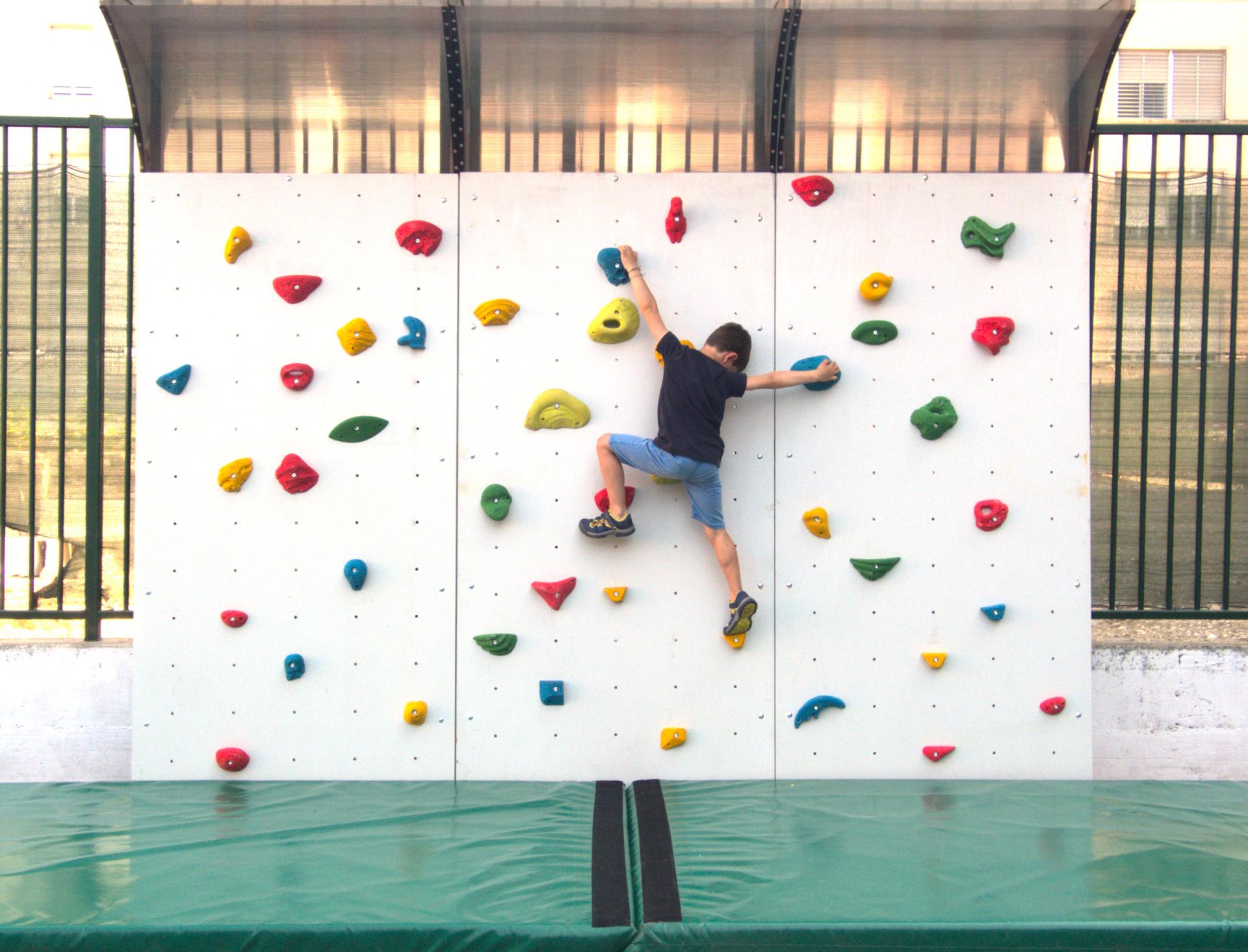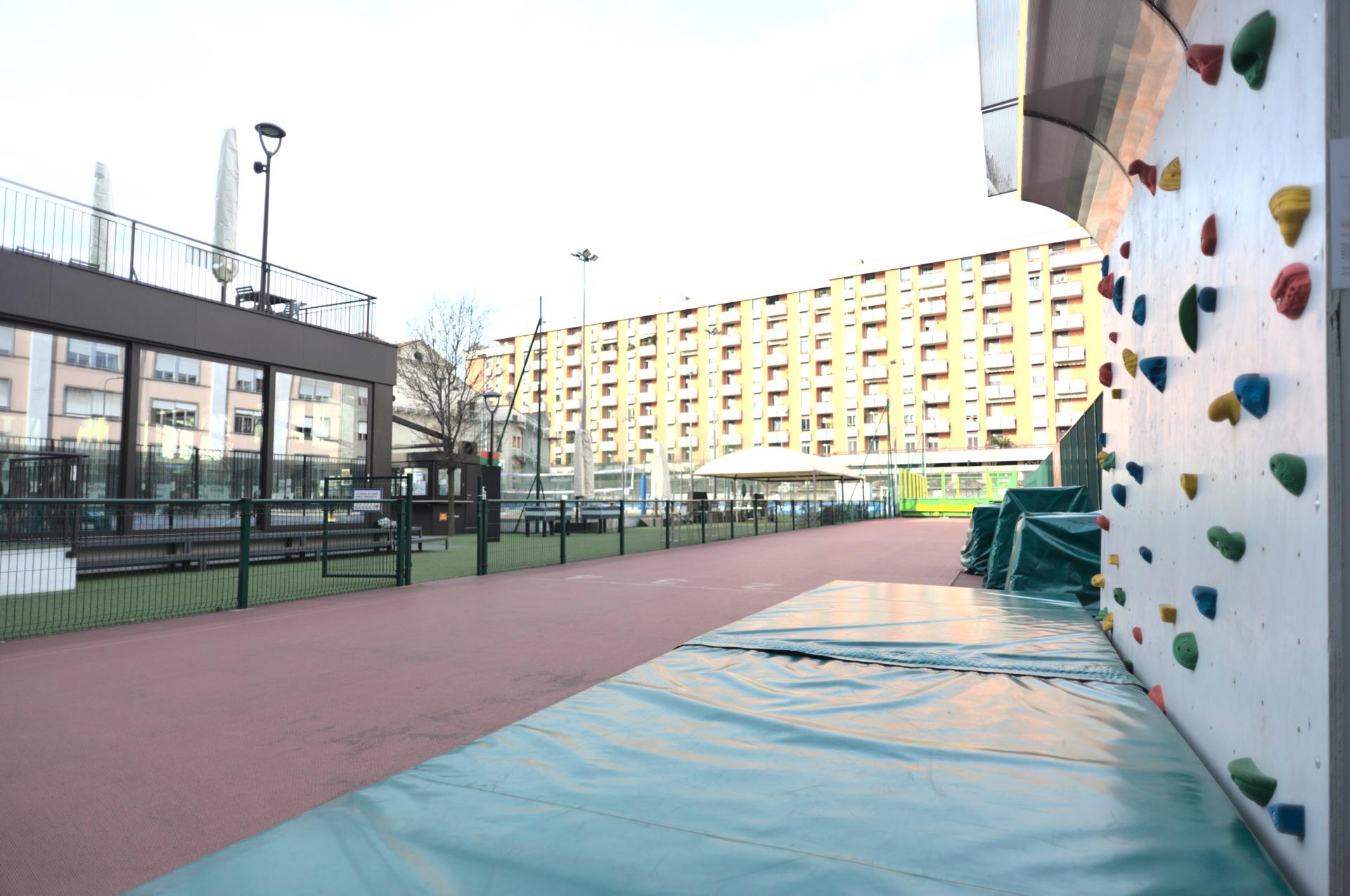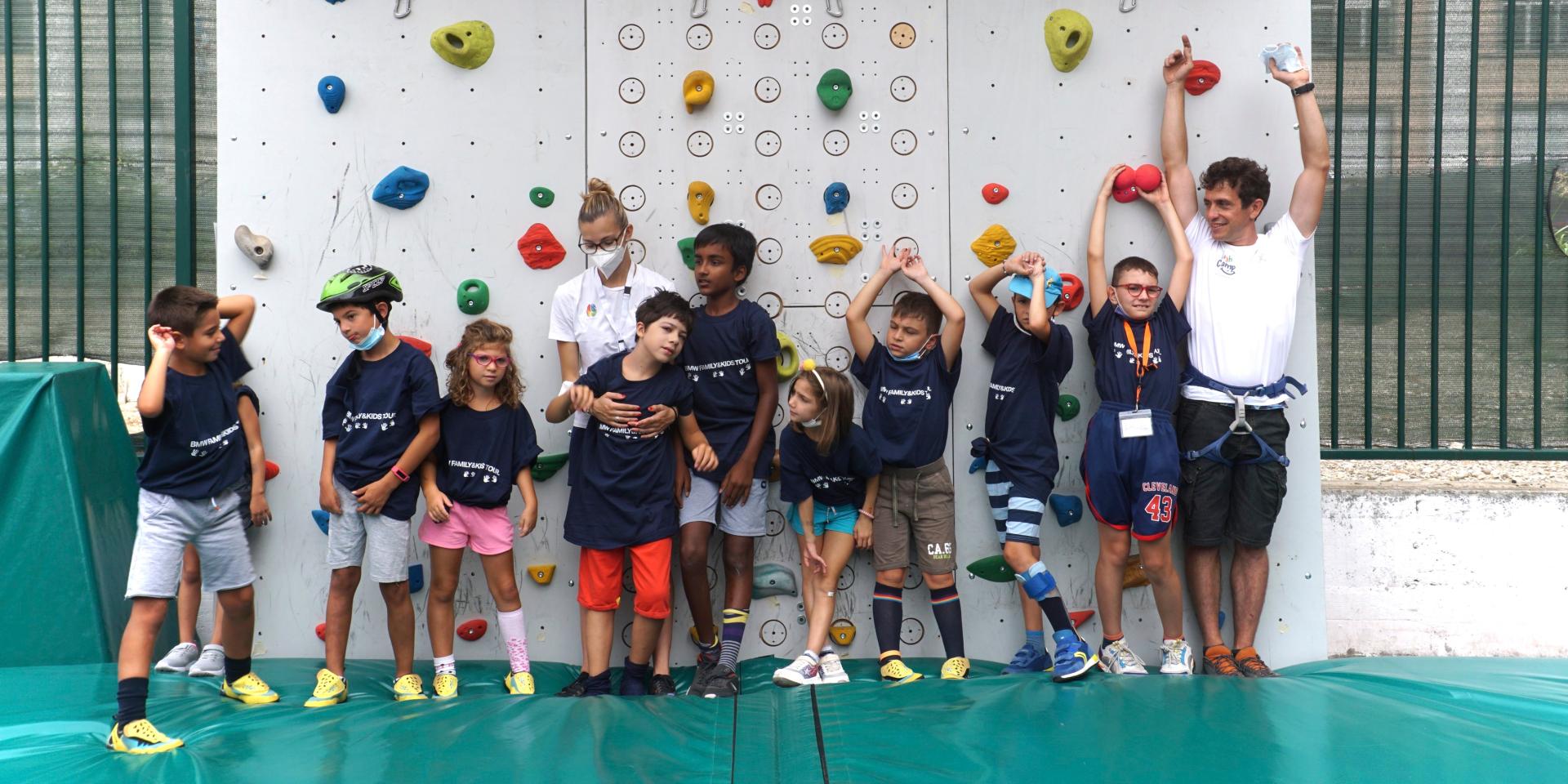rehabilitation for all
Basic information
Project Title
Full project title
Category
Project Description
Cerebral Palsy and milder neurological conditions are causes of disability for millions of children, who require prolonged rehabilitation, well over what national healthcare systems can provide. ACCEPT is an engaging platform to support rehabilitation and clinical assessment, in and outside the hospital. A hi-tech adaptive climbing structure, it matches the clinical need with inclusiveness and represents a cheap and sustainable opportunity for rehabilitation and a route to healthier adult life.
Geographical Scope
Project Region
Urban or rural issues
Physical or other transformations
EU Programme or fund
Which funds
Description of the project
Summary
Cerebral Palsy (CP), a set of perinatal neurological conditions, is one of the most common causes of disability in children, affecting over 17 million people worldwide. Milder neurological disorders regard a much larger but uncharted paediatric population. These people can recover all or part of their motor abilities through prolonged rehabilitation, but resource constraints and, in the best cases, the relatively mild degree of disability, leave them out of the coverage of national healthcare systems.
ACCEPT, funded by the Polisocial Award 2019 programme of Politecnico di Milano, designed and realized an adaptive climbing wall optimized to support rehabilitation and continuous clinical assessment for this population.
The structure was designed in partnership with FightTheStroke, a foundation protecting the rights of young people with CP. Ergonomics were optimized to meet the needs of the target population, adopting an inclusive design approach to analyse user needs, and organising co-design sessions that involved FightTheStroke's qualified staff, climbing instructors, physiotherapists, designers, engineers. The climbing wall was equipped with sensors, patented by the research group, that evaluate the children's motor performance as they use the wall, to support a continuous clinical assessment thus reducing the need for costly and time consuming in-hospital sessions. The wall can host standard climbing holds, as well as specially designed holds, patent-pending, that facilitate typical rehabilitation exercises. The appearance and general esthetics of the wall were also guided by the need to install it at PlayMore!, a public open-air sporting centre inserted in one of Milan's central design districts.
The resulting structure is open to the public and used weekly by over 260 children, including 29 with disabilities, and 22 with other forms of socio-economic fragility. Opportunities to reproduce the wall nationwide are being evaluated.
Key objectives for sustainability
ACCEPT, starting from the standard climbing wall, optimized ergonomics, materials, appearance and meaning to obtain a structure that is profoundly adapted to its scope. In this transformation we followed the principles of Design for Sustainable Behaviour (DfSB), considering environmental, economic and social impacts throughout the product lifecycle and considering user behaviour to drive the development of a product that encourages sustainability. This holistic approach to sustainability took two main forms.
First, ACCEPT was designed with sustainable materials (waste material content). The adapted climbing holds are made of Stone 3D Printing, a highly sustainable 3D printing technology that uses residual waste powder from the stone industry to create strong, durable, and affordable structures. This eco-friendly inkjet technology offers durability and superior performance while using less material. The supporting structure is made of FSC®- certified okumè plywood, a symbol of responsible forest management. This material is more durable and weather-resistant; it is a domestic wood, and no chemical processes are used for varnishing.
Second, ACCEPT was designed to encourage sustainable behaviour, popularizing climbing as a form of minimal-impact outdoor activity, a healthy lifestyle for people with and without disability and an incentive to an eco-friendly outdoor activity. This philosophy is embodied in the choice of hosting ACCEPT at PlayMore!, an urban sporting centre that is entirely outdoor. Regular physical activity enhances well-being and contributes to the delay of chronic disease, and in this context ACCEPT brings children with and without disabilities closer to the practice of sport through an outdoor and democratic recreational activity. More broadly, by designing ACCEPT as an outdoor and publicly accessible structure, we reconnect urban users with the outdoors and we instil the appreciation of the outdoor space, both urban and natural.
Key objectives for aesthetics and quality
The objectives of the ACCEPT project mandated the placement of the climbing wall in a space that was public, outdoor, and highly visible, to maximize the impact of its inspirational message. Our choice went for the PlayMore! sporting centre (see details at playmore.it), for its location and its proven philosophy of sport as an inclusive activity. The location, outdoor in a highly visible space in one of the central Milan design districts, posed tight constraints on the aesthetics of the ACCEPT wall, to fit the allotted space while being visually pleasant, functional, able to withstand the outdoor environment and remain usable even after moderate rain. These requirements suggested the design of a modular wall with a visually soft partial cover that protects the structure and prevents children from climbing too high while leaving a seemingly smooth transition to the sky, and a system of mattresses that can be folded back to free space for other activities while providing some degree of protection from the elements. Size and colours were optimized to provide playful yet welcoming space for children with motor as well as cognitive disabilities, who may reject a space with too vibrant colour or an excessively imposing structure.
The initial co-design sessions also revealed the need for ad-hoc holds that favour therapeutic exercises as part of the climbing movements, and create perceptual pathways to engage the child. Holds with different textures, properly installed on the wall, can stimulate the tactile sensitivity of the plegic limbs. Subsequent expert interviews allowed us to identify four upper limb movements that need particular focus during the rehabilitation/climbing activity: hand prone-supination, hand opening, thumb opposition, and elbow extension. Holds (patent pending) were designed to respond to these needs, obtaining a platform that is a unique and powerful message of inclusiveness and hope.
Key objectives for inclusion
The increasing awareness of social diversity has prompted designers to create solutions to foster independence in everyday tasks. Among the effects of CP are a variety of motor disabilities that impair a person's ability to move, maintain balance, perform daily tasks. Climbing, on the other hand, is a physically demanding, highly symmetric activity that requires concentration, motor planning, and sequential thinking, and is regarded by practitioners as a promising tool to counteract the effects of CP and other neurologic disorders. The ACCEPT project's ambition was to explore and promote the role of adaptive climbing as a therapeutic tool, an inclusive training solution, and a means to track and support rehabilitation. ACCEPT is a climbing wall redesigned from scratch to remove all barriers for children with vastly different levels of motor and cognitive disabilities. Size and colour were chosen to give a comfortable, playful space, where the child can at all times be in contact with the therapist or tutor, can be helped and supported by a rope, or left free to move about the wall safely, in a structure that complies with the standing EN norms. Holds were optimized in shape for different degrees of motor ability, and both shape and arrangement in the designed climbing drills were tailored according to information gathered from experts in climbing and rehabilitation. To this end, ACCEPT adopted an inclusive design approach, to directly involve the CP children and all the relevant actors dealing with rehabilitation and climbing: the children's families, physiotherapists, climbing instructors, and researchers. The process led to the identification of the design requirement, considering needs, desires, knowledge, experience and expertise.
Results in relation to category
ACCEPT targets the pressing need of providing support to a large population of children with mild to moderate disabilities who, for a matter of resource constraints, frequently fall outside of the coverage of national healthcare systems. It does so by providing not only an accessible and inclusive path to sport and rehabilitation but by inspiring children with a healthy passion for outdoor physical activities, a passion that is easily transferable to a more sustainable and healthier lifestyle as adults. Thanks to its location, visibility, and the fact of being open to public use, it serves a second, not less pressing need: it acts as an urban billboard for a message of inclusion, equality, and recognition of each other’s differences and potentials.
The choice of using sport, and specifically climbing, as the basis for this breakthrough project, was based on scientific evidence and on the solid experience of the FightTheStroke foundation, partner of the project, that has been working for years to develop evidence-based rehabilitation strategies, including the Fight Camp initiatives (www.fightthestroke.org/fightcamp). We chose to follow a human-centred design approach to strike the right balance between the needs of the many stakeholders involved in such a project, which range from the children with disabilities and their families, to the hosting space, to the clinical partners, the athletic trainers, and the engineers in charge of implementing the technology that turns the wall into an active tool of analysis and measurement in the hands of the therapists.
The resulting structure is now open to public access, and used weekly by over 260 children, including 29 with disabilities, and 22 with other forms of socio-economic fragility. Opportunities to reproduce the wall nationwide are being evaluated.
How Citizens benefit
The primary beneficiaries of the project are children with disability and the actors operating around them: caregivers, family members, educators. ACCEPT offers them a tool to enhance motor performance through the practice of an adapted and inclusive sport. The objectives of the project were however ambitious, and turning climbing into an inclusive activity was not an obvious outcome at the onset. To find the right path, to succeed in communicating our message of sport and inclusion as well as designing the platform itself, we had to actively involve representatives of the many stakeholders. The project was therefore born out of a strong collaboration between experts and a multidisciplinary research team. The first research phase, which involved workshops and interviews, allowed us to deeply understand CP children's abilities through the direct experience of people with different backgrounds. The involvement of physiotherapists, climbing instructors, and climbers, through interviews, provided comprehensive contextual insights and crucial interconnections between climbing and the CP rehabilitation requirements. Discussion and exchanges with the Italian Sport Climbing Federation (FASI) and its paraclimbing branch, with the Italian Alpine Club, with hospitals, care centres, were instrumental in directing the design choices. The FightTheStroke foundation was fundamental to understanding the barriers that CP children face in daily activities. The same stakeholders were also involved in the idea generation during the co-design workshops and the prototype testing. The data and ideas that emerged were applied and tested over two Fight Camp summer camps, gathering precious feedback to further improve the ACCEPT technology and experience.
Physical or other transformations
Innovative character
ACCEPT is unique and effective in overcoming the main barriers to sporting activity for CP children: the modular wall is easily adaptable to placement outdoor as well as indoor in widely different contexts, without the need to redesign and certify the structure. It represents a tool for inclusion and aggregation and offers the opportunity to perform an activity that does not require expensive equipment for practice. and it benefits from the support of para climbing instructors, trained to initiate into the sport of Paralympic disciplines.
The structure includes innovative holds, tailored for the task and first of their kind (and patent pending), and novel sensing technologies, including a triaxial force sensor applied to each hold that was patented at the Politecnico di Milano (WO2019/123038 A1). This allows ACCEPT to assess how children interact with the holds and control fine motor movements, to evaluate motor performance. It has the dual advantage of providing medical staff with a tool to help measure progress and, together with the presence of feedback, reward children for the results achieved and stimulate them to overcome their limits ('reinforcement learning'). ACCEPT is therefore potentially suitable to become a new standard rehabilitation tool capable of creating measurable scientific and social impacts.
Thanks to these characteristics, ACCEPT is a unique, high impact, and scalable product.
Learning transferred to other parties
The project outcomes are stimulating and transferable to different contexts. The adapted climbing wall and the inclusive design methodology that we used have exciting potential and equally significant impacts. The inclusive design process, followed under the leadership of the IDEActivity Center at Politecnico, was applied to identify the design requirements considering children's diversity and the many other needs, involving all the relevant actors in the design process. This inclusive design process is based on the Double Diamond divergent and convergent thinking model - and a set of tools - centred on the synergy between creativity techniques and design tools - to enable collaborative actions aimed at identifying and solving design problems through the direct involvement of users. The project considered the principle that inclusivity is co-created with people at risk of exclusion to design a solution that includes a broad spectrum of diversity. The first step of inclusive design is learning to recognise exclusions by checking whether any mapped diversity could be excluded from the user experience. The second step is to learn from diversity by recognizing the bias that everyone can bring into the project.
The resulting climbing wall is scalable to rehabilitation centres, gyms, schools, hospitals. It is an effective tool for rehabilitation assistance and quantitative analysis of progress. ACCEPT also incorporates several new technologies, some of which are patented or patent-pending, that are transferable to new and up-and-coming areas. This transfer of new technologies from lab to society is itself a paradigm that research centres and society are looking at with increasing interest.



